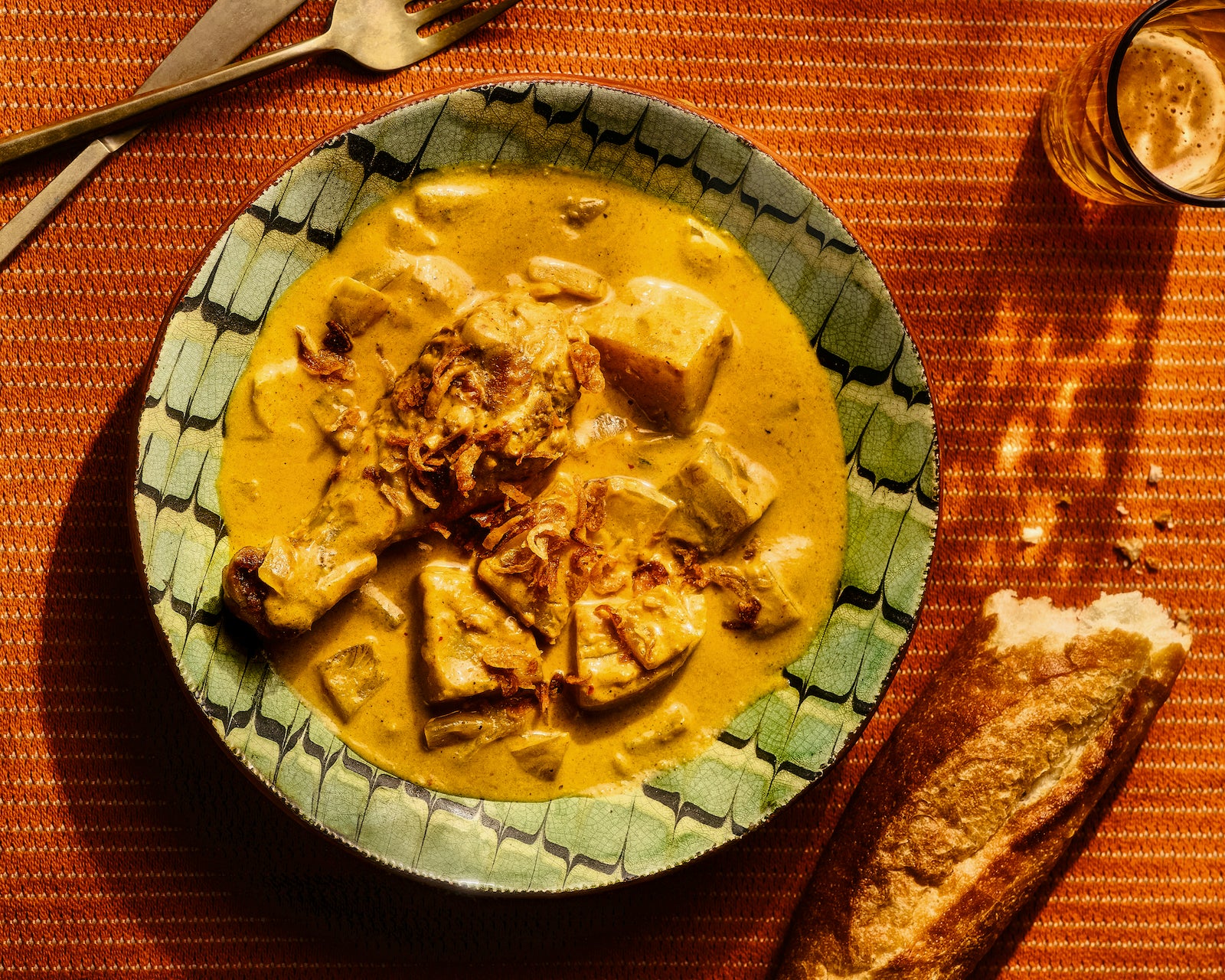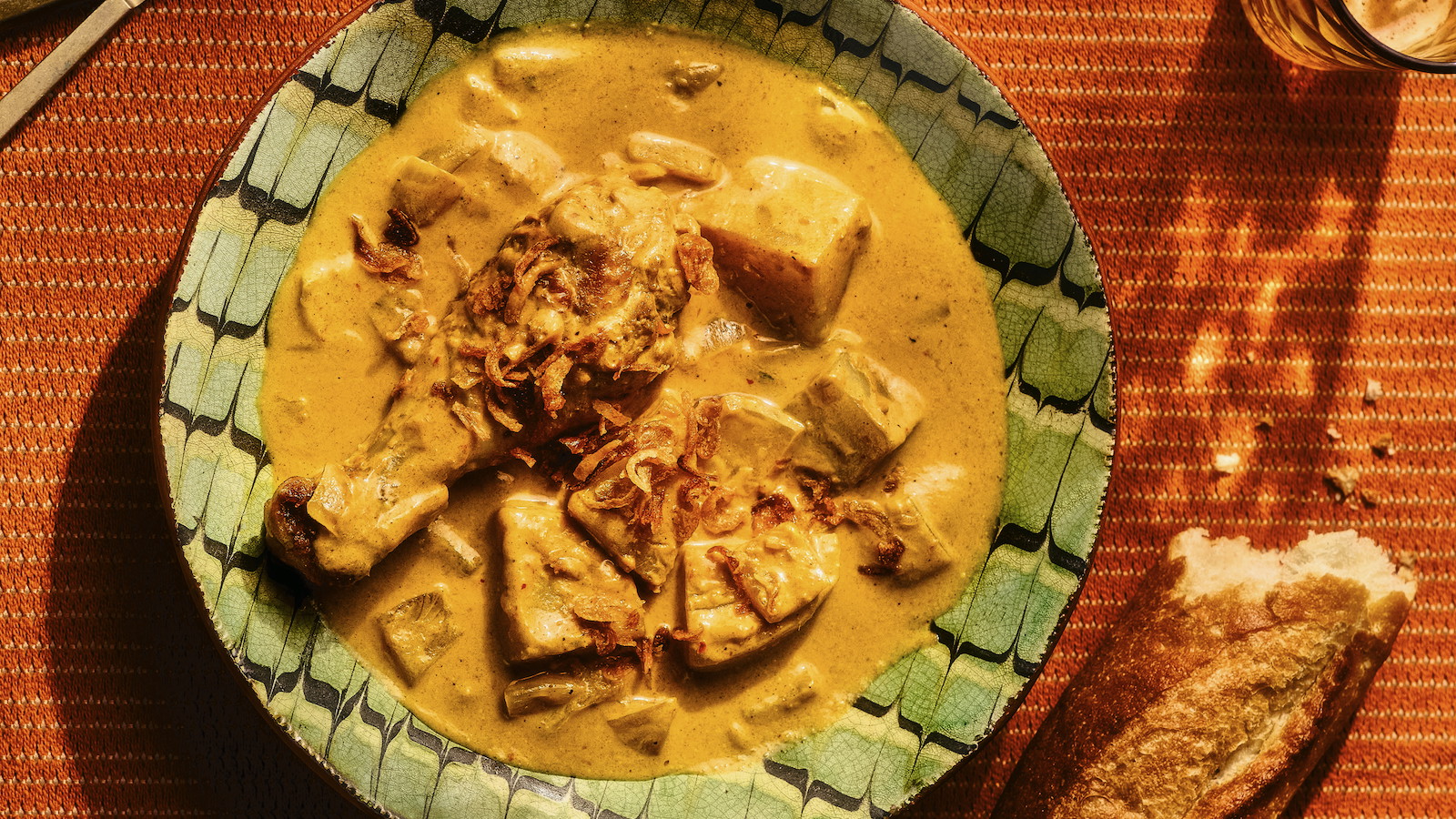Chicken Curry (Curi Sach Mu-Anh)

This site has limited support for your browser. We recommend switching to Edge, Chrome, Safari, or Firefox.
FREE shipping on orders of $50 or moreFREE shipping will be applied at checkout
Spend $50 more for FREE shipping!FREE shipping will be applied at checkout
Sorry, looks like we don't have enough of this product.



By Nite Yun
Rated 5.0 stars by 1 users
By Nite Yun
4-6
Used with permission from My Cambodia: A Khmer Cookbook by Nite Yun with Tien Nguyen. Photographs by Nicola Parisi © 2025. Illustrations by Kann “Nak” Bou © 2025. Published by 4 Color Books, an imprint of Penguin Random House.
Curi sach mu-anh was a big hit at Nyum Bai from day one. But while it was a regular item at the restaurant, the curry traditionally is more of a holiday or special-occasion food; my brothers and I usually ate it only when my mom made it as an offering to take to the temple. And when she made it, that meant a fun trip with my dad to pick up a crusty baguette from Giovanni’s, an Italian deli he discovered during one of his many food jaunts around Stockton. As for the curry itself, my mom added all sorts of things to it, like pork blood and bamboo shoots. My version is simpler, but feel free to experiment with adding your favorite seasonal vegetables. Note that like most Cambodian curries (and unlike, say, many Thai curries), this is pretty mild and a bit soupy, with prahok and kroeung providing layers of flavor and a silky texture. If you can plan ahead, I highly suggest making the curry the night before serving, as the flavors will develop and deepen very nicely overnight.
3 tablespoons grapeseed or other neutral oil
3 tablespoons Master Kroeung (see below)
3 tablespoons Bok Mtes / Chile Paste (see below)
1 tablespoon prahok (see Note)
Toasted baguette, Bai / Steamed Jasmine Rice, or vermicelli noodles, for serving
3 ounces dried California chiles, seeds removed (see note)
1 1/2 teaspoons grapeseed or other neutral oil
In a medium pot over high heat, heat the oil. Quickly sprinkle a few pinches of salt all over the chicken. When the oil begins to shimmer, add the chicken skin side down. Once the pieces have a nice sear, about 4 minutes, flip and sear the other side, about another 4 minutes. Transfer the chicken to a plate.
Vegetarian variation: Replace the chicken for tofu and/or your choice of vegetables, omit the prahok and fish sauce, and increase the salt in the broth up to 2 teaspoons, or to taste.
Place the chiles in a small pot, completely cover with water, and turn the heat to low. When the chiles soften, about 5 minutes, transfer them, along with ½ cup water from the pot, to a blender. Add the oil to the blender and blend until smooth. It’s now ready to use. To store, cool the paste, place it in an airtight container, and refrigerate for up to 1 week. To freeze, portion the cooled paste into small resealable frozen food bags and freeze for up to 1 month.
Prahok: Many Asian cultures have some version of a fermented fish paste; prahok is ours. Look for prahok in glass jars at Southeast Asian markets or online. If you can’t read Khmer, the jar may be labeled “mud fish sauce” (or something similar). The paste will either be creamy and smooth, or coarse with pieces of fish; I always use the smooth paste. Make sure the only ingredients are fish and salt; there shouldn’t be any rice, rice flour, or oil. Generally, the price will reflect the quality of the prahok, so buy the best you can afford. When you work with it, be careful of bits of bones or skin that may be present, even in the smooth versions; if you find any, pick them out and discard.
Master Kroeung: The key to great kroeung is in the smashing of the ingredients. Crushing each ingredient in the mortar will break down the fibers and release aromatic oils and flavors in a way that tearing and shredding will not. That said, if you don’t have a mortar and pestle, a food processor is the next best thing: Place all the ingredients in the bowl of the processor and pulse several times until it turns into a paste. If the ingredients aren’t combining, add a little bit of grapeseed or another neutral oil to help things move along.
Chile paste: If you can’t find the dried California chiles (also called Anaheim chiles) I use here, any other large dried chile like a chipotle or ancho chile will do, though the color of the paste may vary depending on which chile you choose.



